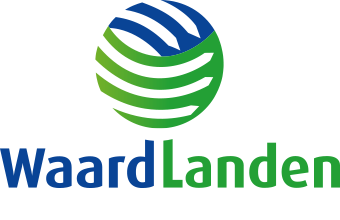We collect plastic packaging, metal packaging (cans) and drink cartons - pmd for short - separately. This allows us to recover valuable raw materials for reuse. You can offer pmd in a special container or at one of our environmental centres.
Separating pmd neatly may sometimes be complicated: what is allowed with pmd and what is not? Yet it is very important for a good sorting and recycling process. The reason: The quality and therefore the value of collected materials should remain as high as possible. And the cost of separation as low as possible. Therefore, here is a list of the most common products that do and do not belong to pmd.
What belongs where?
With the pmd
Empty plastic containers
All empty plastic containers of food, personal care products and cleaning products, such as:
- cups for dairy products
- blister packs
- chip bags
- coffee packaging (silver foil)
- jar lids
- blister strips of medicines and chewing gum
- bottles of personal care products
- bottles of detergents and cleaning agents
- bottles of oil and vinegar
- bottles of soft drinks, water and dairy products
- fruit, vegetable and salad trays or bags
- tubs
- squeeze bottles for sauces
- pasta and rice bags
- Chips
- plastic bags, bags and sacks
- plastic bread bags
- plant pots
- jars for gel, medicines and vitamins
- sauce bags
- plastic candy bags
- plastic candy bags with metallic coating
- soup bags
- tubes for e.g. gel, cream and toothpaste
- packaging of cheese, meat products and fish
Empty cans and other metal packaging
All empty containers made of tin and metal that have contained food, such as:
- aluminium food trays
- aluminium or metal can (packaging)
- canned goods (please bend lid inwards)
- beverage cans for soft drinks and beer
- steel syrup bottles
Empty beverage cartons
All empty packs that have contained food (please fold flat and replace cap), such as:
- packs for juices, water and wine
- packs for milk, custard and yoghurt
- packs for soup and pasta sauce
Not with the pmd
- beverage cartons containing leftovers or waste from other products
- household goods and utensils
- agricultural plastic
- loose cardboard or other waste paper
- styrofoam
- tote bag (heavy, reusable plastic shopping bag)
- aerosols of e.g. whipped cream, hairspray and deodorant
- paint cans
- packages with contents
- packaging of chemical waste, such as make-up containers, turpentine bottles, sealant tubes
What goes in the pmd bin? Do the check
How pmd recycling works
After your container is emptied, we take the pmd to a processor. The processor separates the materials: plastics, metals and beverage cartons. Then each raw material stream goes to final processors. Final processors turn the raw material streams into new raw materials.
- Plastic is ground into flakes, cleaned and ground into pellets, for example. From these granules, new plastic packaging and products are made. For example, fleece clothing, mobile phone and laptop casings, car dashboards and tennis balls.
- Metal is indefinitely recyclable. Metal factories use it as a raw material to manufacture new cans. But also, for example, building materials, bicycles and aeroplanes.
- The recycling plant separates the cardboard fibres from the carton of beverage cartons of the plastic (polyethylene) and the aluminium layer. The cardboard fibres are raw material for the paper industry to produce, for example, boxes, stationery and tissue paper. The plastic and aluminium are also recovered. They are used as raw material for products such as crates, buckets and aluminium tubes.
See how pmd is sorted






